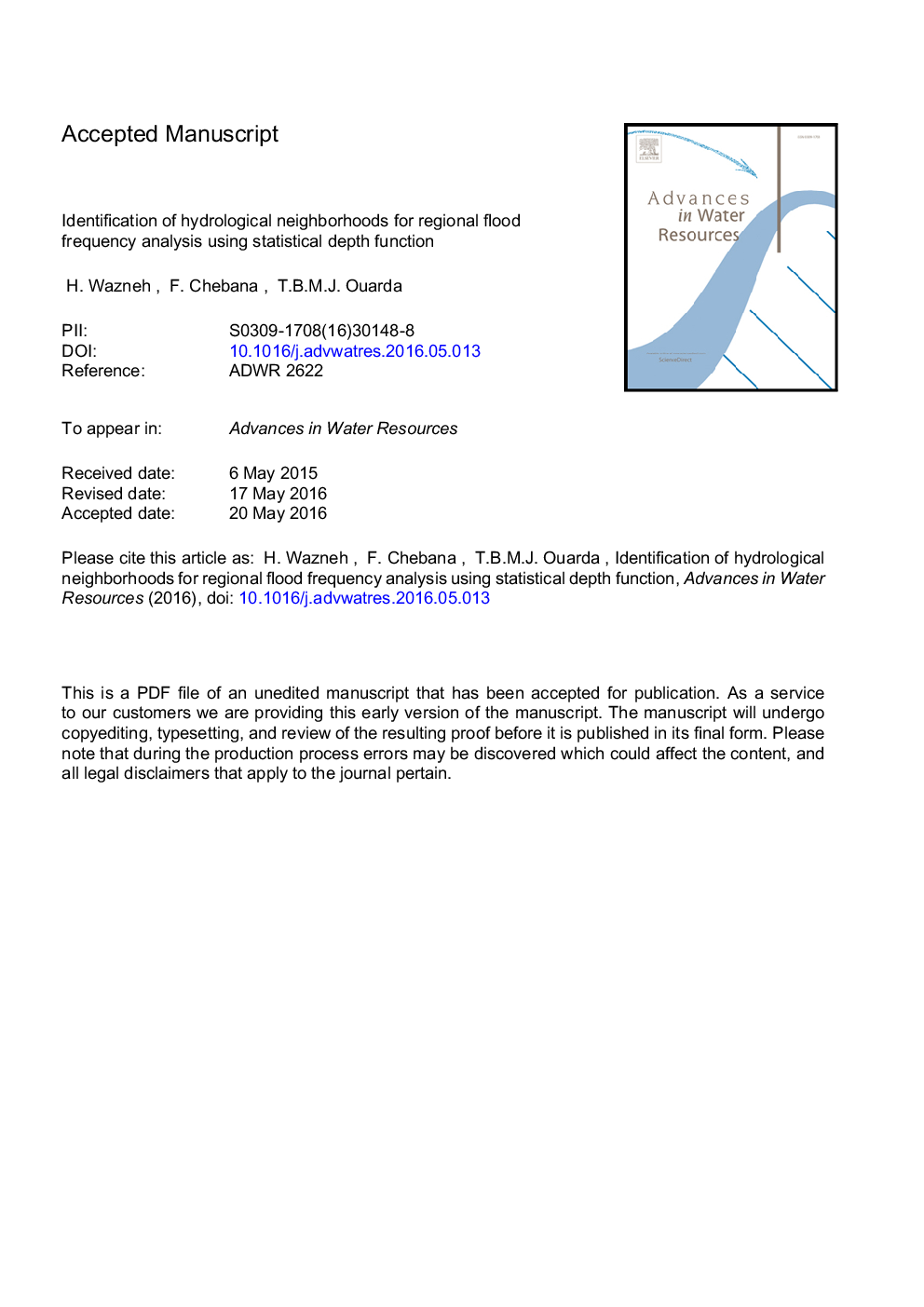| Article ID | Journal | Published Year | Pages | File Type |
|---|---|---|---|---|
| 6380740 | Advances in Water Resources | 2016 | 42 Pages |
Abstract
The adoption of hydrological neighborhoods is one of the common approaches employed for the delineation step in regional frequency analysis (RFA). Traditional methods proposed for building hydrological neighborhoods are mainly based on distance metrics. These methods have some limitations. They are not robust against outliers, they are not affine invariant and they require site characteristics to be normally distributed. To overcome these limitations, the present paper aims to propose a new robust method to identify the neighborhood of a target site. The proposed method is based on the statistical notion of depth function. More precisely, a similarity measure derived from depth functions is used to compute the similarities between the target sites and the gauged ones. A data set from the southern part of the province of Quebec (Canada) is used to compare the proposed method with traditional ones. The obtained results indicate that the depth-based method leads to neighborhoods that are more homogeneous and more efficient for quantile estimation, than those obtained by traditional methods. The triangular shape of neighborhoods obtained by the proposed approach makes it practical and flexible.
Keywords
Related Topics
Physical Sciences and Engineering
Earth and Planetary Sciences
Earth-Surface Processes
Authors
H. Wazneh, F. Chebana, T.B.M.J. Ouarda,
